List of Essential OilsOver the last few decades, complementary and alternative medicine (CAM) has grown in popularity, and essential oils are its component. Essential oils are extracts of liquid that come from different plant parts. The essential oil contains many different active phytochemicals, and therefore they have a strong scent. Apart from their scent, essential oils are also very helpful for other purposes like beauty and health. Manufacturers have used essential oils from different parts of the plants to produce different fragrances for various purposes, like adding scent to body washes, soaps, lotions, and other body care products. They are also added to medicine preparations called aromatherapy. Aromatherapist thinks that inhaling essential oils allows some potentially beneficial components to reach the lungs and bloodstream, which may benefit the body. For example, inhaling menthol helps relieve congestion and shortness of breath. But this doesn't mean a person can swallow essential oils because they are highly concentrated, but they may also irritate the body's delicate cells. Some may consume Essential oil orally but only in rare cases. Many people believe that essential oils have no adverse effects as they are natural products. But this is not wholly correct because essential oils can cause adverse effects like irritation and burn, so before applying any oil to the skin, always dilute them with the carrier oil. Here is the list of oils that are extracted from different plants. 1. Lavender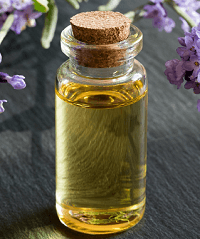
This extremely popular oil offers a plethora of advantages. This soft flowery aroma might aid in relaxation and sleep. Furthermore, breathing it in has been shown to aid with headache relief. Using the oil may help relieve irritation and swelling from insect bites. There are just a handful of recognized adverse effects. Nausea, headaches, chills, and vomiting are some of the symptoms. If you have an intolerance to it, it might also irritate your skin. 2. Roman chamomile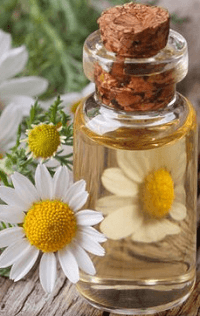
This oil can put your mind at peace with a mild floral and herbal aroma when diffused and absorbed through steam. While this oil is excellent for soothing the mind, it is also beneficial to the skin and has been used to treat problems such as inflammation and eczema. Anyone allergic to daisies, marigolds, or ragweed should avoid using this oil. 3. Rose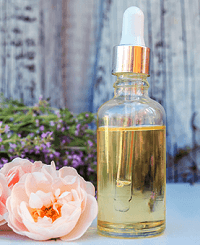
The lovely, flowery aroma of rose oil has been demonstrated to help alleviate anxiety when breathed. Its antioxidant capabilities have also been reported to help cure acne and enhance the complexion. When applied topically, skin irritation might develop; therefore, use an extra carrier oil to gain the skincare advantages of rose oil. 4. Hyssop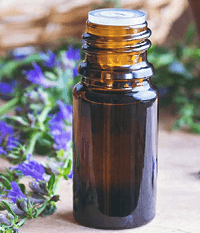
This earthy, herbal, and sweet-smelling essential oil can be applied to the skin to help reduce scarring. According to various trusted sources, it acts as an anti-inflammatory and general healing agent. Use hyssop with caution if you are pregnant or have a history of seizures. 5. Ylang ylang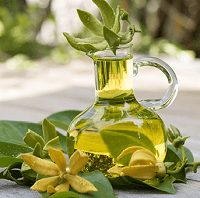
This flowering oil has a spicy but sweet perfume and has been recommended as a relaxing aid. It is commonly found in cosmetics and boasts many aesthetic advantages, such as treating combination skin and developing hair growth. According to a trusted source, it is a self-esteem booster, and it may even work as a repellent to some insects. 6. Myrrh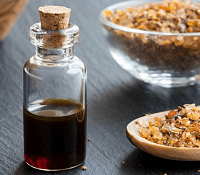
This sweet-smelling essential oil is claimed to help with skin problems. It helps by alleviating acne and damaged skin and may even aid in treating athlete's foot. Myrrh should never be consumed orally. If you use it topically, keep in mind that it has been linked to dermatitis. Heart abnormalities and low blood pressure are more serious adverse effects. It can also raise the chances of miscarriage if used by pregnant women. 7. Vetiver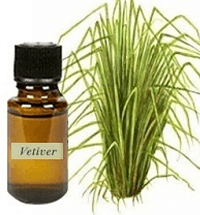
The smoky, sweet perfume of vetiver is frequently used in soothing aromatherapy to lift your mood and settle your nerves. It has been discovered to help boost skin health and repair scars due to its antioxidant effects. Because it is non-irritating and non-sensitizing, it is an excellent topical choice for people who cannot tolerate other essential oils. 8. Frankincense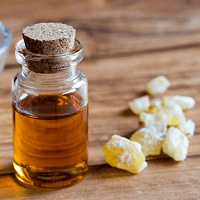
This perfume may remind you of the holidays, but it also possesses astringent, digestive, antiseptic, and disinfecting effects. It may help avoid dental ailments such as poor breath, toothaches, cavities, and mouth sores, and one research shows it may also assist improve skin health. Aside from occasional skin irritation, consumers may be assured that there are no serious negative effects to utilizing frankincense. 9. Grapefruit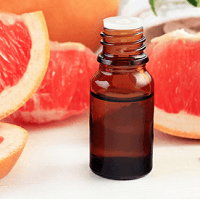
Even though it is also derived from a citrus fruit - especially the peel - it has a more bitter and fresh fragrance and is a popular diffuser oil. It is claimed to contain antifungal qualities, which may aid in the reduction of any hazardous germs within. 10. Cedarwood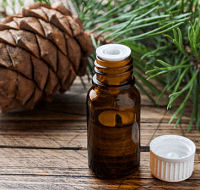
An earthy and natural woody scent, Cedarwood is utilized in various topical cosmetic treatments. According to research, its advantages include battling acne, curing eczema, and decreasing dandruff. On top of that, it is said to help alleviate arthritis and relieve coughing. It is vital to note that none of these advantages are obtained by eating the oil. Consuming cedarwood oil is not safe and can cause vomiting, nausea, thirst, and digestive system damage. 11. Peppermint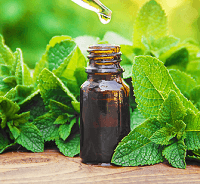
Some data suggest that inhaling the minty herbal fragrance of this oil might help reduce I.B.S. symptoms. Similarly, a little research suggests that this oil might aid with headaches and indigestion. When applied topically, you will notice an immediate cooling effect. This can assist with things like muscular discomfort (as well as potentially increasing workout performance). Peppermint essential oil should not be consumed since it can produce severe adverse effects such as heartburn, headaches, an inflamed esophagus, and mouth sores. Stick to genuine mints if you need to refresh your breath. 12. Spearmint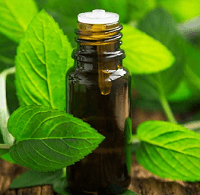
This other minty choice has a comparable scent and advantages to peppermint, so it can be considered as an alternative. Spearmint oil has a somewhat sweeter scent than peppermint oil and has been shown to have antifungal effects. When used topically, it has the same cooling effect as peppermint, making it equally beneficial for repelling insects and soothing bug bites. Before taking spearmint oil, consult your doctor if you are pregnant or nursing. 13. Basil oil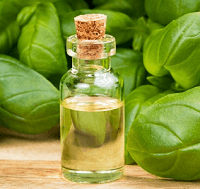
Basil essential oil has several external and interior applications. It has been demonstrated to be both antiviral and anti-inflammatory. So it can be used as a cold and flu cure and a muscle relaxant. One earlier study discovered that it acted as a stress reliever. It may also be used in hair treatments to remove buildup and improve shine. In pregnancy or while breastfeeding, consult a doctor before taking basil. 14. Melaleuca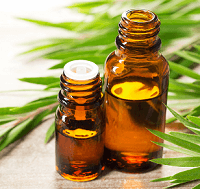
You're certainly familiar with this oil by its more widespread name, tea tree oil, and its distinct medicinal aroma. In addition to treating hypersensitivity, it is also used in several other therapies. This oil should only be inhaled or used topically; it should never be ingested. You may encounter stomach difficulties, rashes, or dizziness if you do. Tea tree oil is available in several strengths. If it's pure, be sure to dilute it. Tea tree oil - or any other oil, for that matter - can potentially cause allergic reactions. 15. Lemon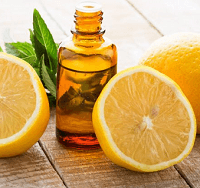
This fruity oil is high in antioxidants, which can help decrease inflammation and prevent anemia. It also increases energy levels and alleviates nausea. Safety: You may use it to nourish your skin but remember that you should only apply it at night and wash it off in the morning because it is extremely photosensitive. When using lemon oil topically, avoid exposing your skin to direct sunlight. 16. Arborvitae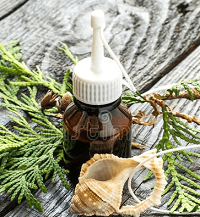
This little-known oil has a woody fragrance and is claimed to repel pests and alleviate tension. Its key selling point is that it is said to create a healthy, bright complexion. Inhaling too much might potentially irritate your lungs and respiratory system. It has been demonstrated to be harmful when taken orally. 17. Orange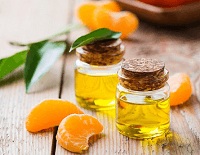
It's no surprise that this vitamin C-rich oil provides several skincare advantages when used topically. This oil may be used in various cosmetic products and claims to help skin seem brighter, smoother, and clearer. In terms of health advantages, research has shown that orange may assist reduce anxiety and provide some pain relief. There are certain drawbacks to this bright and tangy citrus oil. If you apply it directly to your skin, you may experience redness and swelling. Avoid direct sunlight immediately after application. 18. Helichrysum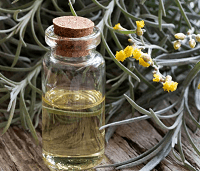
This oil has antioxidant, antibacterial, antifungal, and anti-inflammatory qualities that can support internal and external health. Studies have shown that it can help cure athletes' foot, acne, and psoriasis when applied to the skin. It smells like honey and hay. It is usually regarded as safe oil and has been shown to cause little to no allergic responses, making it an excellent choice for persons with sensitive skin. 19. Cassia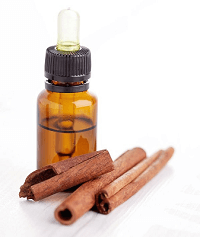
This oil, derived from the Cinnamomum cassia plant, has a warm and spicy aroma comparable to cinnamon, except it's a little sweeter. Unlike minty oils, which have a cooling impact on the body, cassia oil has a warming effect, leaving individuals feeling calm. However, anyone who is pregnant should avoid using this oil. 20. Oregano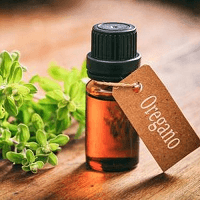
This spicy essential oil has antibacterial, antiviral, and antifungal qualities, which may help cure sports foot, bacterial infections, psoriasis, and warts. According to a study, it has excellent antioxidant qualities and may help alleviate fevers and respiratory issues. This strong, spicy perfume with herbal undertones can be utilized in aromatherapy or used topically to gain benefits. If you are pregnant or nursing, consult your doctor before using oregano oil.
Next TopicList of Hair Accessories
|
 For Videos Join Our Youtube Channel: Join Now
For Videos Join Our Youtube Channel: Join Now
Feedback
- Send your Feedback to [email protected]
Help Others, Please Share










